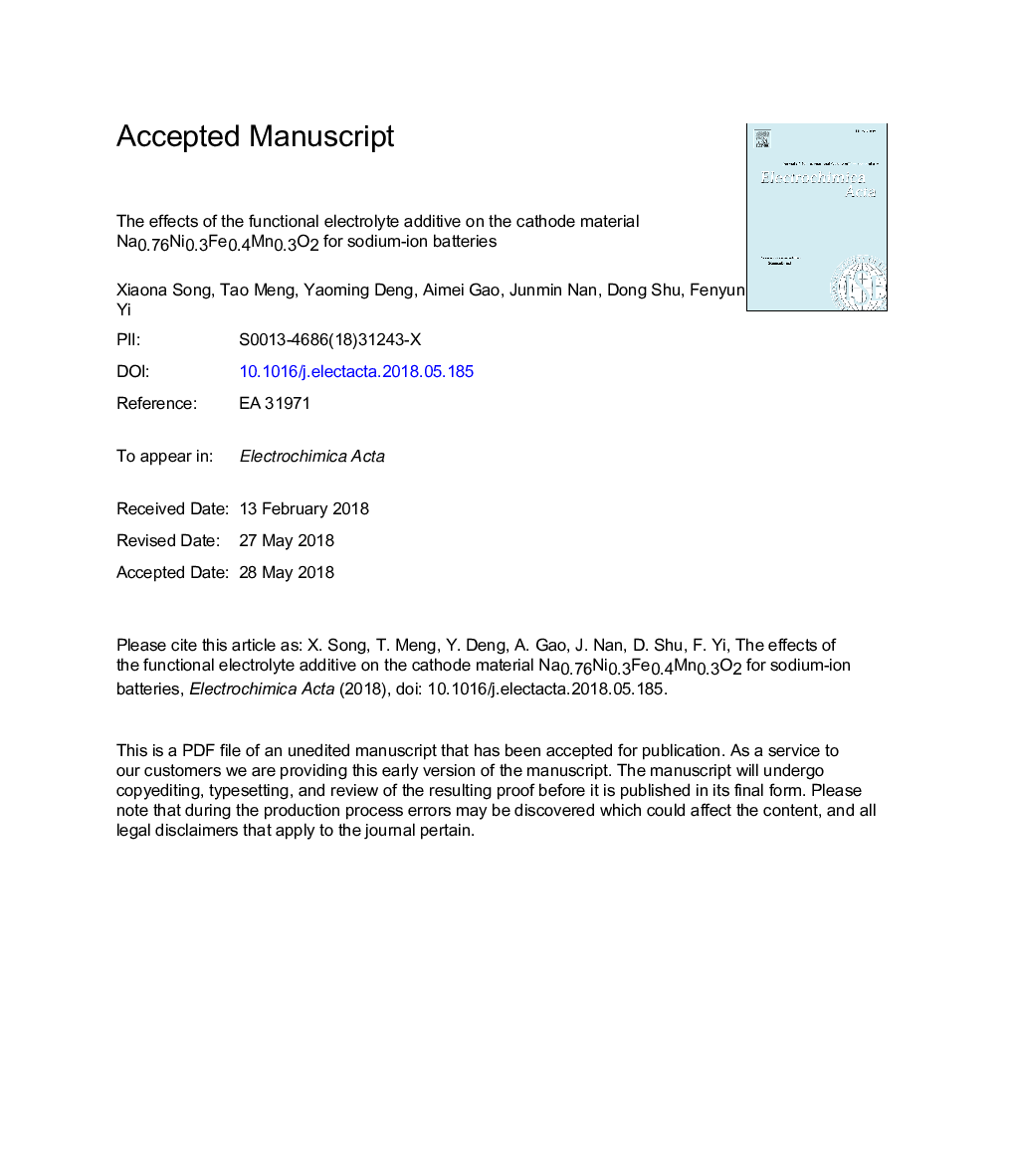| Article ID | Journal | Published Year | Pages | File Type |
|---|---|---|---|---|
| 6602376 | Electrochimica Acta | 2018 | 33 Pages |
Abstract
A commercially feasible sodium-ion pouch cell with a capacity of 650â¯mAh is fabricated using the ternary layered Na0.76Ni0.3Fe0.4Mn0.3O2 and the hard carbon as the cathode and anode materials, respectively. 1.0â¯M NaPF6 in the mixed carbonate solvents is served as the electrolyte. According to the calculation of the frontier molecular orbital energy, adiponitrile (ADN) has a stronger ability of electron donating than the carbonate solvents and thus is easier to be reduced on the surface of the cathode material to form the solid-electrolyte interphase (SEI) film, so ADN is selected as the electrolyte additive to improve the performance of sodium-ion battery for the first time. The transmission electron microscopy (TEM) images show that the addition of ADN enables the formation of more uniform and compact SEI film on the cathode material surface. The X-ray photoelectron spectroscopy (XPS) results indicate that ADN promotes the formation of NaF and result in the formation of NaCN as the effective components of the SEI film. The electrochemical test results demonstrate that ADN effectively improves the electrochemical performance at high -low-temperature and cycling stability of Na0.76Ni0.3Fe0.4Mn0.3O2 as the cathode material of sodium-ion batteries, that is because the adding of ADN in electrolyte result in the formation of more effective SEI film. In particular, the battery using the electrolyte with 3% ADN exhibits the most obvious improvement, which owe to the formation of most compact, stable and effective SEI film after adding 3% ADN into the electrolyte. At the operating temperature of 45â¯Â°C, â10â¯Â°C, and â20â¯Â°C, the discharge capacity increases by 10.5%, 8%, and 13%, respectively. For the cycle life, the capacity retention of the battery without addition of ADN drops rapidly to 75% after 40 cycles, while the capacity retention of the battery with 3% ADN still remains 78% after 220 cycles.
Related Topics
Physical Sciences and Engineering
Chemical Engineering
Chemical Engineering (General)
Authors
Xiaona Song, Tao Meng, Yaoming Deng, Aimei Gao, Junmin Nan, Dong Shu, Fenyun Yi,
